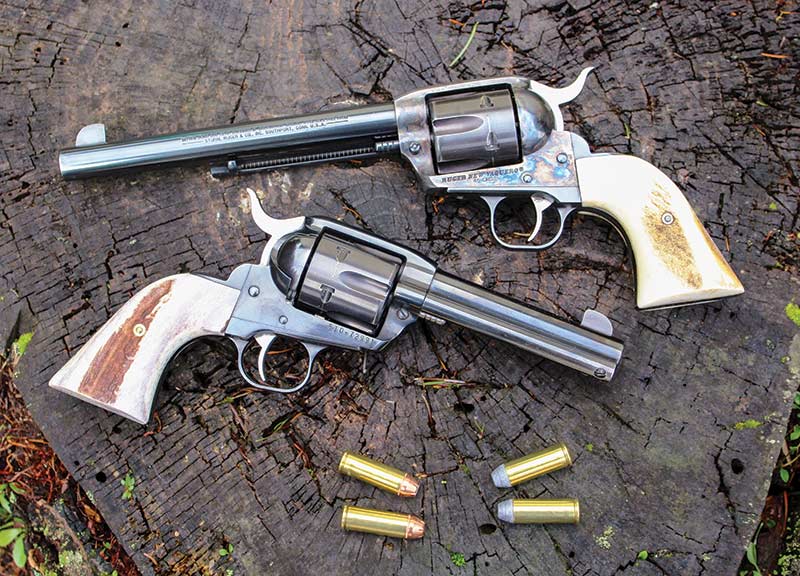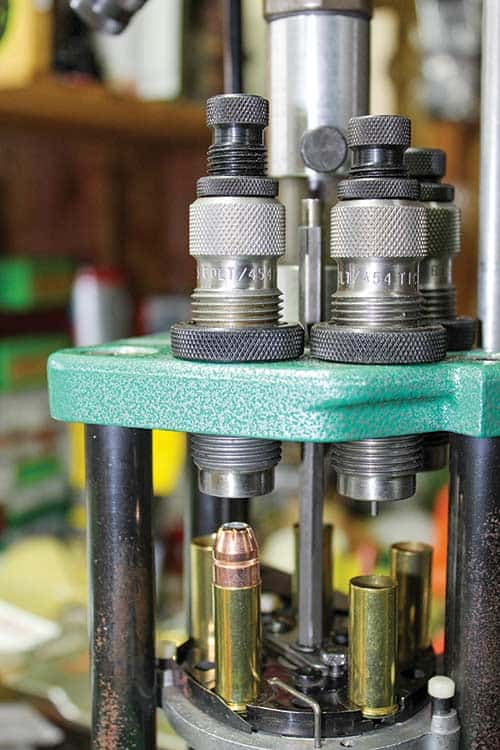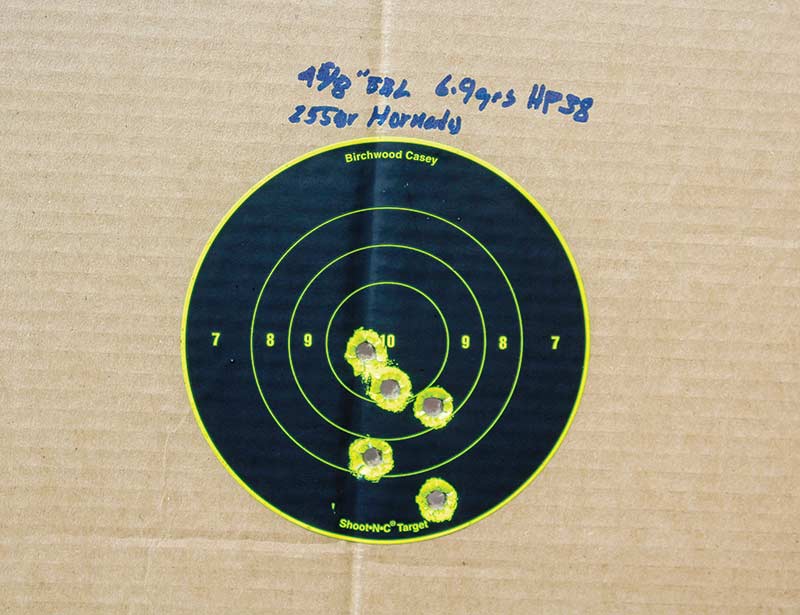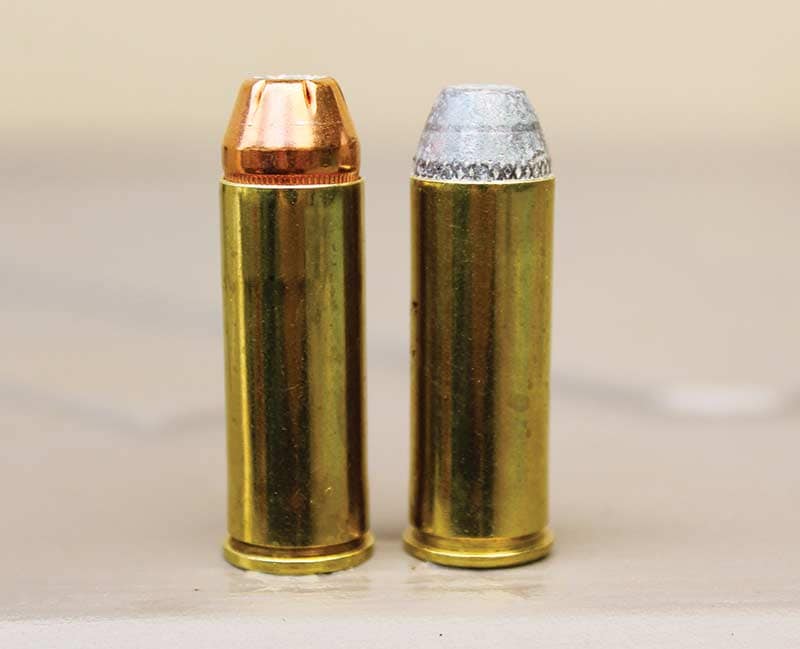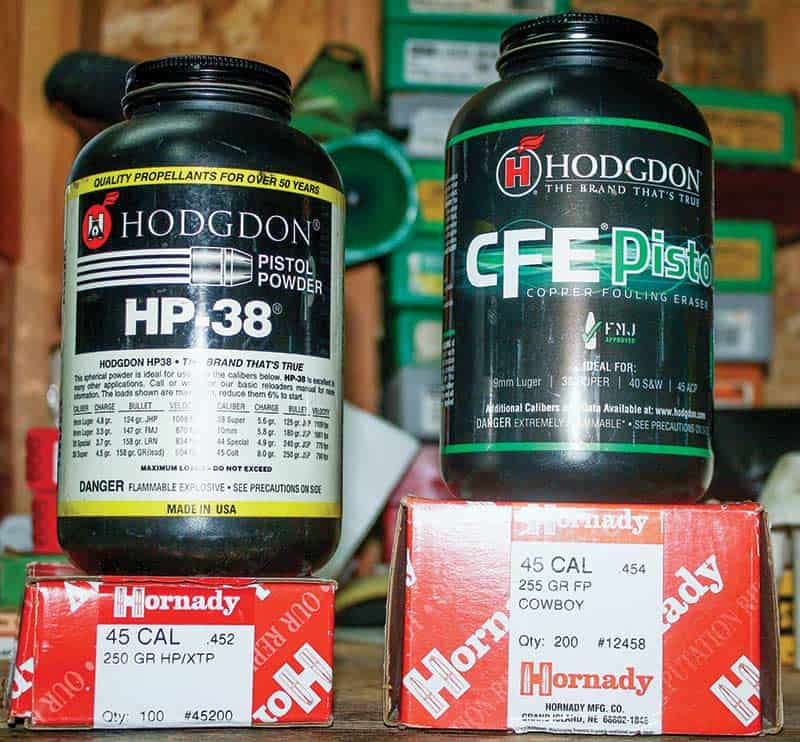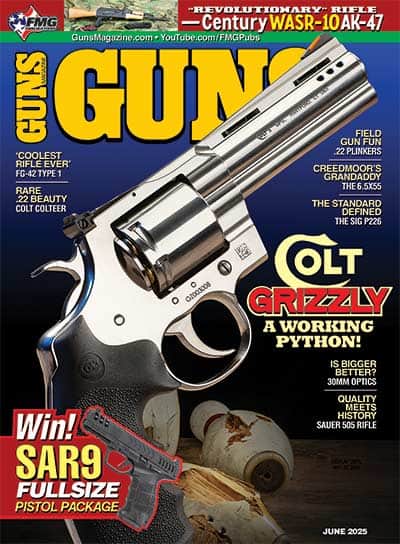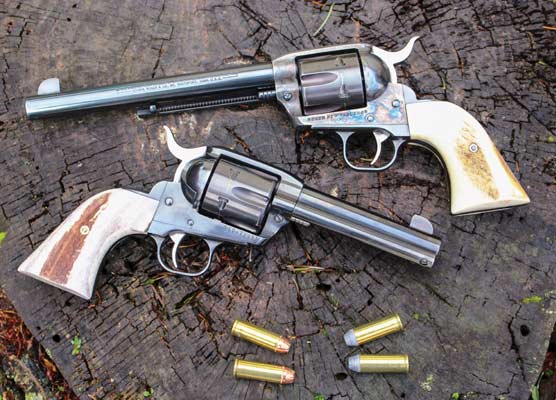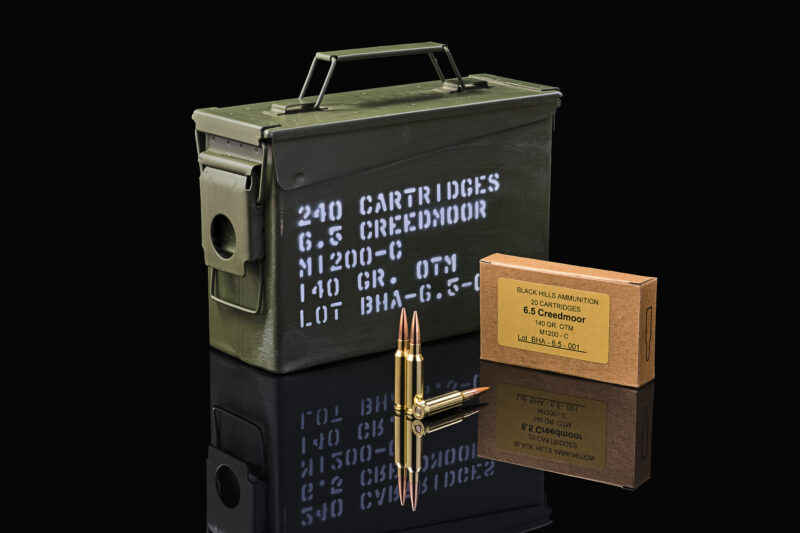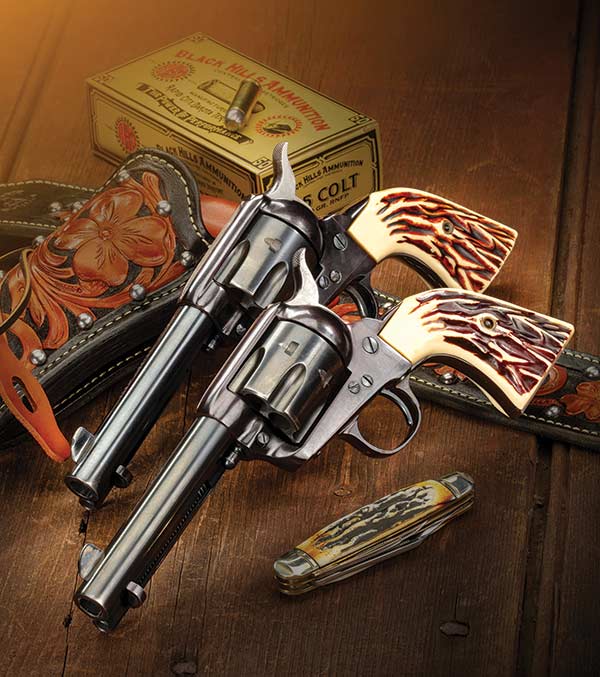A Brace of .45 Colt
Two Good Bullets, Two Reliable Powders
Wyatt Earp is credited with observing “Fast is fine, but accuracy is final,” so when I went looking for a reliably accurate .45 Colt load for use in my two Ruger New Vaquero wheelguns — one with a 4 ⅝” barrel and the other wearing a 7 ½” tube — the chore was to find something with enough punch to pop small game yet also deliver the hurt on something bigger in an emergency.
Oh, and since I dislike missing, the bullet needs to go wherever I’m aiming. Back when I was more actively involved in teaching firearms safety and personal protection classes, one of the first thing I’d tell the class was “a bullet that misses the target will hit something else.”
Limiting Factor
I’ve never been eager to push guns, propellants or bullets to the limit; it’s really unnecessary and in my experience, the effort doesn’t always accomplish what we’re all after — the “perfect load” — and besides, the process results in wear and tear on a firearm and my gun hand.
The .45 Colt is a proven and time-honored cartridge from its introduction more than 150 years ago as a black powder load through its transition to smokeless propellants. Today, there are even juiced-up loads specifically for use in either Ruger, Freedom Arms or Thompson/Center handguns that can handle higher pressures than the Colt SAA and its clones. Overall, for work in the woods or the street, the .45 Colt is a formidable choice and back in my wasted youth, I once considered carrying a short-barreled single-action .45 as a defensive sidearm. Alas, a tight budget got the better of me and so did a good deal on a 1911 in .45 ACP.
For my current exercise, I focused on two propellants with which I’ve had repeated success: Hodgdon’s HP-38 and CFE Pistol. The goal was to produce accurate loads in the 750-850 fps realm. It was “Mission Accomplished,” and with a couple of recipes, better than anticipated.
For brass, I used a mix of Starline, Winchester, Remington, Black Hills and a handful of nickel-plated Speer cases, all previously fired and trimmed to Hornady’s recommended 1.275″. All cases were wet-tumbled to a sparkling shine. Primer pockets were individually hand-cleaned for positive primer seating.
Because I have two sets of .45 Colt dies, one from Redding and the other from Hornady, I set the Redding for seating the XTPs and the Hornady for seating the lead bullets so as to avoid having to re-adjust things.
The Freedom Dust
HP-38 is a spherical powder and in my opinion, a reliable and versatile mid-range propellant with which I’ve brewed up accurate loads in 9mm, .38 Special, 45 ACP and .45 Colt. It flows consistently in my progressive press and downrange performance has never been disappointing. It has a higher burn rate than CFE Pistol and I’ve been using it for many years.
CFE Pistol is also a spherical propellant and has also delivered the goods since my early experience with the stuff when it first appeared some 10 years ago. It burns clean while delivering slightly better velocities and performs as advertised in the virtual elimination of copper fouling. While it is promoted primarily for semi-auto pistol cartridge reloading, I’ve been satisfied with CFE Pistol in loads brewed up for use in my vintage Colt Diamondback using 6.2 grains behind a Hornady 125-grain XTP with a small standard CCI primer. At 25 yards, I manage to keep ’em in the black and I don’t beat my classic wheelgun to pieces in the process.
My two bullet choices for the .45 Colt this time around were the superb 250-grain Hornady XTP (0.452″), a bullet the company says was developed to expand at a “wide range of velocities.” The second was Hornady’s 255-grain FP (0.454″), a projectile primarily aimed at the cowboy action crowd but for my purposes, putting the hurt on whatever I happen to shoot at. While admittedly my results with the XTP were what might be considered modest by some, out of the longer-barrel gun the XTP leaves the muzzle at just over 850 fps over a charge of 8.6 grains of CFE Pistol ignited by a standard Remington large pistol primer. Recoil is easily manageable, and it’s a rather comfortable round to shoot.
I have used 250-grain commercial LSWC bullets in the past over 7.0 grains of HP-38 and they have also performed satisfactorily. However, truth be told, I was at a reloading shop last fall when I found a big box of the 255-grainers with a good price tag and simply couldn’t resist. Shame on me, the self-admitted impulse buyer.
I was favorably impressed by the performance of the 255-grain lead bullet, using the same powder charge as with the XTP. Out of the 7 ½” barrel, this bullet gave me an impressive average velocity of 927.2 fps and a tight little group at 15 yards that would easily translate to rabbit stew.
On the other hand, loading 6.9 grains of HP-38 behind the same 255-grain lead bullet, my longer Ruger delivered velocities of 814.5 fps average with a high mark of 849.7 fps over my chronograph.
Naturally, my velocities using the shorter-barreled sixgun with the same load were a bit slower, but that was anticipated. Still, my short gun produced muzzle velocities averaging 739.9 fps, which could easily stop a bobcat, coyote or some other live target. A few decades ago, a deputy sheriff of my acquaintance once professed a love for “a big, slow-moving bullet” for social work and the years have not proven him wrong.
Likewise, over 8.6 grains of CFE Pistol, the bullet still clocked an average of 796.9 fps out of the 4 ⅝” tube with a high mark of 819.9 fps, and I managed to average 795.1 fps using the 250-grain XTP over the same powder charge. Sure, I could up the powder charge and stay within SAMMI specs while achieving a little more velocity, but that was not my intention here.
One could easily conclude Wyatt Earp’s principle was based entirely on wanting to stay out of a grave and putting someone else in it. My purpose is to consistently punch holes in paper and tin cans, occasionally filling a stew pot and to avoid being the main course at a mountain lion banquet. I’ll leave it to the reader to determine which is the better motive.
